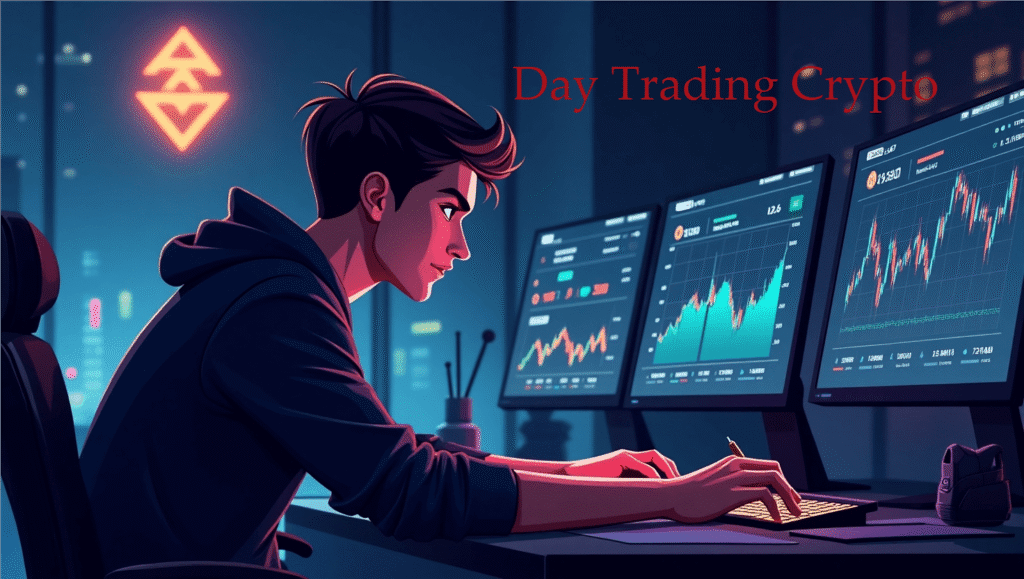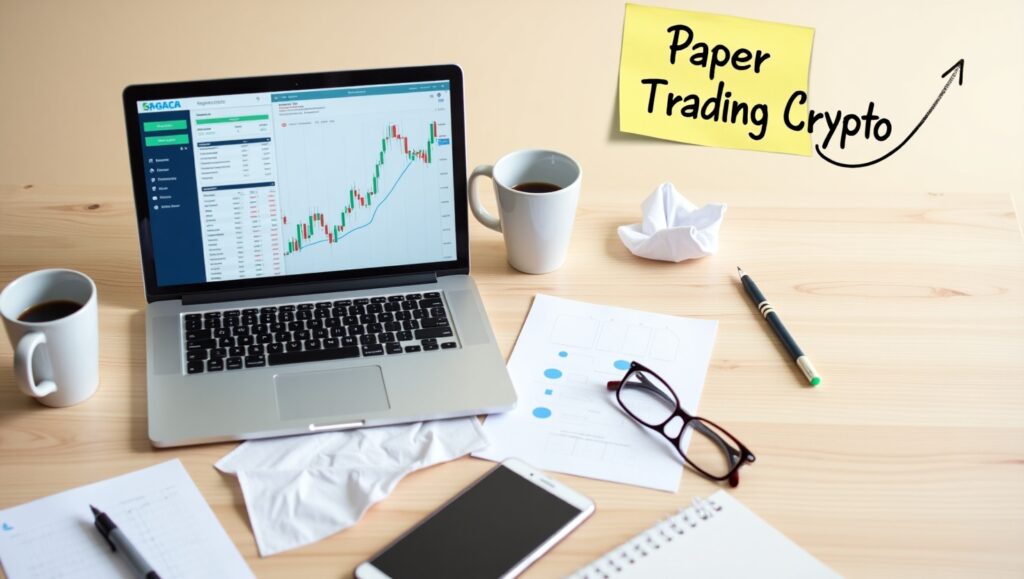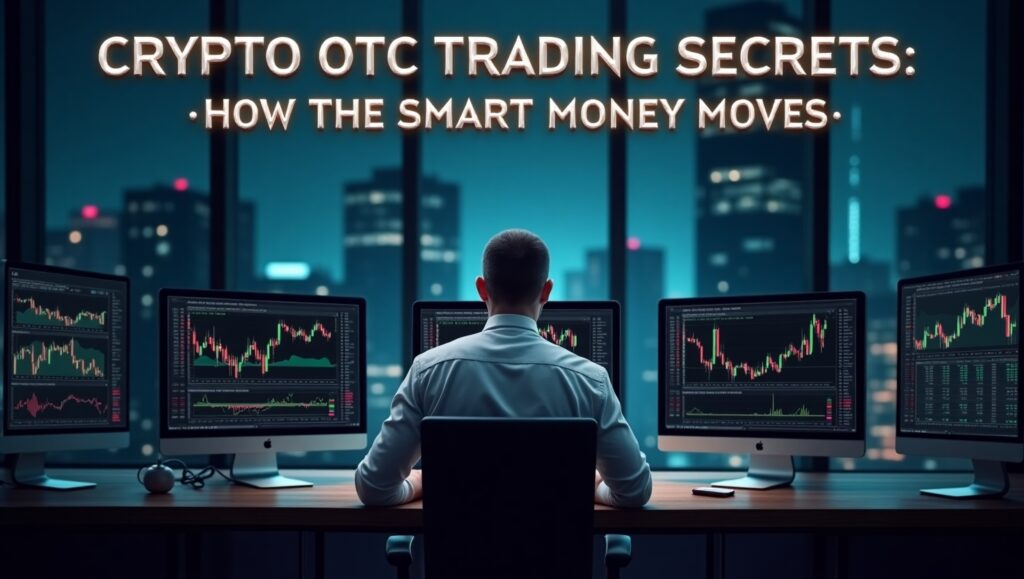
Introduction
The crypto trading market has grown into a multi-billion-dollar industry and draws in new traders as well as experienced investors. Crypto trading features multiple modalities, ranging from spot trading and contracts to paper trading simulations and high-stakes leveraged deals to exploit market fluctuations. This complete guide covers essential trading types and strategies while explaining core concepts to help you succeed in the volatile crypto market.
Day Trading Crypto: Proven Strategies to Maximize Profits
Day trading crypto requires investors to buy and sell digital assets within one day to generate profits through short-term market fluctuations. Successful crypto day trading requires continuous market surveillance coupled with technical analysis skills and strong risk management capabilities.

Day traders who operate professionally rely on technical indicators, including RSI (Relative Strength Index), MACD (Moving Average Convergence Divergence), Bollinger Bands, and candlestick patterns to determine optimal entry and exit points. The tools detect changes in momentum and trend direction as well as volatility alterations. A 2024 Binance report indicates that crypto active day traders achieve average monthly returns between 12% and 18% but experience high variance based on their trading skill and risk management abilities.
Through disciplined day trading of Ethereum and Solana pairs and a strategic approach, Alex managed to grow his initial $1,000 portfolio into over $10,000 within six months. His trading approach included stringent stop-loss settings while maintaining a trading journal and making decisions based purely on logic.
Newday traders frequently leave the market within their first year because 80% of them encounter difficulties with risk management and unrealistic expectations. Sustained success in trading demands both proper education and emotional control.
Successful day trading depends on disciplined behavior alongside a proven strategy and continuous adjustment to changing market trends. To maintain trading effectiveness traders need to control their stress and prevent excessive trading.
Paper Trading Crypto: The Ultimate Risk-Free Practice Method
Paper trading allows individuals to participate in trading simulations that mimic real market activities but eliminate any financial risk. Beginners will find this tool perfect for testing trading strategies and understanding platform features.

With paper trading, users can execute trades using real-time market prices while avoiding the use of actual money. TradingView, Binance Testnet, and CoinMarketCap Simulator deliver strong paper trading platforms. The method serves as a critical tool for traders to gain confidence while honing their techniques and establishing a routine trading approach.
Paper trading also allows for stress-free experimentation. By simulating trades across various market scenarios, including bullish, bearish, and sideways markets, traders can test the effectiveness of their strategies. Despite its usefulness, paper trading does not reflect emotional responses or liquidity constraints and transaction slippage, which are vital in real-world trading decisions.
Spot Trading Crypto Explained: Dominate the Markets Instantly
Spot trading represents the most direct approach to cryptocurrency exchanges because it involves trading digital assets at existing market rates with immediate effect.
Long-term investors, along with swing traders, commonly use this trading approach. Buyers receive direct ownership of their assets as transactions complete either instantly or within minutes. When you buy Bitcoin for $60,000 on Binance, you get instant ownership of the Bitcoin in your wallet.

Spot traders analyze fundamental developments, including news and regulatory changes, and analyze price action charts to spot value areas. Efficient execution of spot trades requires careful evaluation of liquidity, together with trading volume and market depth.
What Is Spot Trading in Crypto? Unlock This Powerful Trading Method
Spot trading involves exchanges where buyers and sellers come to mutual price agreements and complete transactions immediately. Spot trading doesn’t include leverage and contract expiration features that are found in futures or options trading. This method suits investors who require total ownership and management rights for their cryptocurrency assets.
Major crypto assets such as BTC, ETH, and USDT enjoy high liquidity within the transparent spot market environment. Successful trading in spot markets demands quick decisions because fast price shifts can lead to financial losses. Many traders blend spot trading with the dollar-cost averaging method to minimize the effect of market fluctuations.
Crypto OTC Trading Secrets: How the Smart Money Moves
The OTC crypto trading process entails executing large-volume transactions outside traditional exchange environments. Institutional investors, along with high-net-worth individuals, choose OTC trading because it offers enhanced privacy and less slippage while delivering tailored personal service.

Large trades executed in OTC markets maintain market prices because they do not affect the price like they would on public exchanges. Platforms such as Coinbase, Kraken, and Genesis Trading run OTC desks that perform private transactions between buyers and sellers at agreed-upon prices.
These deals have customizable features, including KYC support, along with legal agreements and multi-sig escrow wallets. OTC brokers deliver execution support and market insights while serving as intermediaries to enable seamless high-value transactions.
OTC Crypto Trading vs Traditional Exchange Trading
This comparative table helps you understand the differences between the trading methods:
| Feature | OTC Trading | Exchange Trading |
| Privacy | High | Low |
| Price Slippage | Minimal | Higher |
| Volume Capacity | Very High | Limited |
| Speed | Negotiated | Instant |
| Accessibility | Requires approval | Open to all users |
OTC Trading Crypto: The Hidden Path to Large-Volume Success
Trades that surpass $50,000 in value favor OTC trading methods. The details of these deals typically include customized pricing quotes along with custody services and escrow protection mechanisms. Chainalysis reports that institutional crypto volume through OTC channels increased by 94% between 2022 and 2024, which indicates rising trust in private transaction methods.
Major crypto hedge funds, together with family offices, select OTC desks to rebalance their portfolios while preventing market sentiment disruption. The OTC markets serve as crucial components for maintaining stability throughout the entire ecosystem.
Contract Trading Crypto: A High-Leverage Approach for Serious Traders
Through contract trading, investors can make predictions about cryptocurrency prices without purchasing the actual asset. Types include futures, perpetuals, and options.
Futures contracts expire after a predetermined date, but perpetual contracts continue without expiration dates and get settled continuously. Through leveraging their positions, traders profit from market movements, whether prices go up or down. The use of leverage brings about a higher risk of liquidation.
Derivatives markets provide high liquidity and enable traders to use multiple order types, including limit orders and market orders, as well as stop-limit and trailing stop orders. Traders can efficiently control their exposure through risk management tools such as isolated and cross-margin settings.

Crypto Contract Trading Demystified: Master the Market Today
A $1,000 position in a Bitcoin contract with 10x leverage results in a $10,000 BTC exposure. A minimal 5% unfavorable shift triggers total liquidation of the position.
Leading platforms such as Bybit, Binance Futures, and OKX provide contract instruments that include funding rate calculation, together with insurance funds and profit and loss tracking.
Successful crypto trading requires knowledge of contract specifications, expiry schedules, funding rate mechanics, and volatility indices. According to a 2024 Deribit report, more than 60% of institutional trading now incorporates derivatives, which shows contract trading is growing in popularity.
What Is Leverage Trading in Crypto? Supercharge Your Trading Potential
Traders use borrowed funds to expand their position size above their personal capital when they engage in leverage trading. This method can enhance profits yet raises the risk of greater losses.
According to a 2023 Glassnode report, volatile market events resulted in liquidation for almost 70% of traders who used leverage. Beginners should opt for low leverage limits between 2x and 5x until they fully comprehend market operations.

Numbered List: How to Start Leverage Trading Safely
- Choose a reputable exchange (Binance, Kraken, etc.)
- Understand margin requirements and funding rates.
- Use low leverage (start with 2x)
- Apply stop-loss orders
- Monitor your position closely.
- Avoid trading during major economic announcements.
Traders need to monitor funding rates and open interest to understand the sentiment in the derivatives market.
Crypto Trading Fund Token: The Future of Decentralized Investing
Crypto trading fund tokens pool investor money to be managed through automated systems or expert-led trading strategies. Investors receive diversified exposure through these tokens without needing to perform separate trades.

A tokenized fund can perform automatic rebalancing of assets including ETH, LINK, and BTC by utilizing momentum indicators. This strategy allows everyday investors to use hedge fund-type investment methods. Users can manage risk and reallocate their investments through a single token that operates dynamically.
The options for automated risk management and asset allocation are provided by platforms such as TokenSets, Enzyme Finance, and dHEDGE. Decentralized trading funds displayed a 37% year-over-year growth in Total Value Locked (TVL) as of Q1 2025 which showed that investor interest had grown.
Active management through on-chain governance controls some funds while others operate based on algorithmic rules. Fund tokens provide market access for users who either lack time or expertise or who show no interest in active trading.
Conclusion
The crypto trading field offers opportunities suitable for traders at all levels, from beginners who practice with paper trading to advanced traders who handle leveraged contracts. Your trading style should reflect your personal goals, along with your understanding of market risks and market knowledge.
This guide provides you with essential information to succeed, whether you choose full asset ownership in spot trading or want to venture into the institutional OTC and fund tokens space.
FAQs
What’s the best trading type for beginners?
Paper trading is ideal for beginners. People ready to invest real capital should consider spot trading as their initial trading activity.
Is leverage trading safe?
Only if used cautiously. New traders should maintain minimal leverage levels while implementing stop-loss orders consistently.
Can I make money with paper trading?
Paper trading generates no real money but develops trading skills and strategies applicable for real profit generation.
How does contract trading differ from spot trading?
Contract trading requires speculators to leverage price movement predictions without holding the physical asset itself. With spot trading, you buy the asset directly and gain ownership of it.

